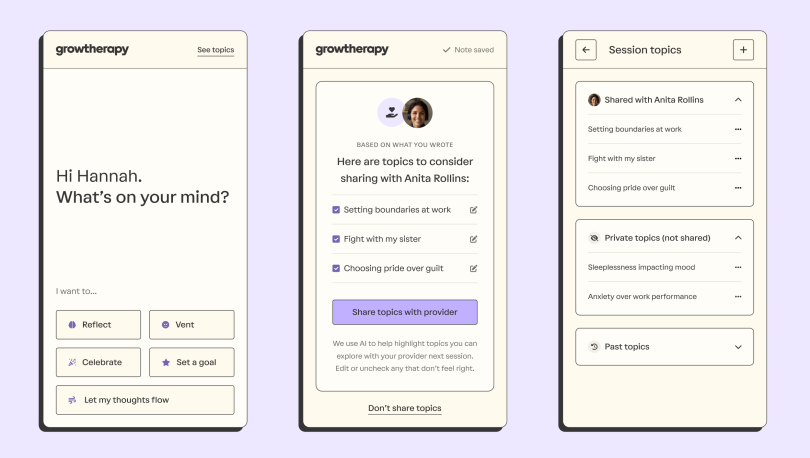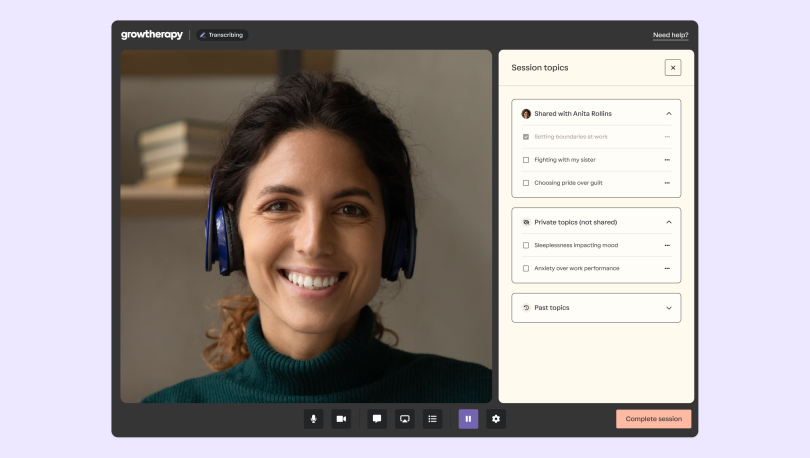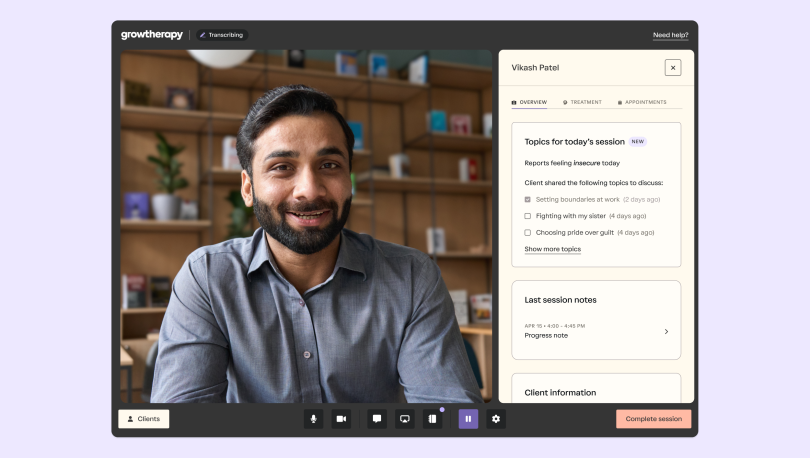Millions of U.S. adults show up to their scheduled therapy sessions, yet they’re still not getting the help they need.
That’s because many people arrive at their sessions not knowing what to focus on, which means they often walk away from therapy feeling as if they haven’t made progress toward their mental health goals.
Grow Therapy aims to change that with its new AI-powered platform feature, Between-Session Reflections, which enables people to capture their thoughts and emotions. The AI-assisted tool helps generate a concise list of key themes that can be shared with the therapist, with the client’s approval.
“The goal is to make each session more intentional and productive, without adding more complexity to the client’s plate,” Staff Product Manager Prabha Dublish said.
To build the solution, she and her peers collaborated closely with several departments, including the company’s clinical team, incorporating evidence-based standards and supported by rigorous evaluation.
“The result is a clinically informed AI experience built specifically for mental health and designed to prioritize accuracy, safety and usefulness for clients,” Dublish said.
Between-Session Reflections is a testament to Grow Therapy’s responsible and thoughtful approach to mental health care. According to Dublish, solutions like this one aren’t designed to replace human-based therapy; they’re simply meant to make it more effective.
“These tools are designed to enhance care, not deliver it alone,” she said. “They work best when paired with experienced clinicians who bring empathy, nuance and context to each interaction.”
Below, Dublish shares more about the work that went into building Between-Session Reflections and how it aligns with Grow Therapy’s mission to transform mental health care.

Why did Grow Therapy need to build this product? What gave rise to it, and what impact will this launch have on the business or its customers?
Nearly 60 million adults in the United States are seeking mental health care, but therapists are often at capacity, and clients don’t always arrive at sessions knowing what they want to focus on. Just getting to therapy is a meaningful step, but making the most of that time can be challenging. At Grow Therapy, we launched Between-Session Reflections to help clients bridge that gap. It’s a simple way for clients to capture thoughts and emotions as they arise, then turn those insights into focused topics they can explore with their therapist. The goal is to make each session more intentional and productive without adding more complexity to the client’s plate.
What role did you play in developing and launching the product? What tools or technologies did your team use to build the product and why?
As a staff product manager, I led this feature from early ideation through research, development and rollout. Partnering closely with our design team, we focused on how to improve the experience for clients and make reflection between sessions feel more useful and approachable. To inform our direction, we interviewed clients and tested multiple concept variations to better understand what would resonate. Their input gave us clarity and confidence in the path ahead. From there, our internal teams, including engineers, clinical psychologists, and legal experts, came together to define and build the feature. Together, we developed a carefully validated prompt grounded in clinical standards and supported by rigorous evaluation. The result is a clinically informed AI experience built specifically for mental health and designed to prioritize accuracy, safety and usefulness for clients.

What obstacles did you encounter along the way, and how did you successfully overcome them?
Like most product development efforts, this feature came with its share of challenges. One of the biggest was developing a prompt that met our high quality standards. We created a set of internal journal reflections to stress-test the prompt and proactively surface potential risks. Another key challenge was ensuring visibility into the quality of AI outputs. To address this, we built automated evaluations using LLM-as-a-judge techniques to monitor for critical risks and give us clearer confidence in what the model was producing. Throughout the process, I kept returning the team to our core purpose: Helping clients make the most of the moments between therapy sessions. That clarity helped us navigate tough decisions and stay aligned as we worked to build something both safe and meaningful.

What teams did you collaborate with in order to get this across the finish line? What strategies did you employ to ensure that the project went smoothly?
This launch required close collaboration across engineering, legal, clinical, content, design and marketing. At Grow, alignment across teams is essential for delivering thoughtful, safety-forward and effective experiences, especially for features that touch sensitive moments in care. What makes this collaboration work is our clarity around roles and principles. Each function contributes a distinct lens, and we hold shared expectations about how decisions are made. There’s one principle we keep front and center: Every bold idea must be clinically grounded and scientifically sound. We don’t accept tradeoffs between innovation and safety — we expect both.
“We don’t accept tradeoffs between innovation and safety — we expect both.”
When you think of other companies in your industry, how does Grow Therapy compare when it comes to how you build and launch new products? What’s different about your workplace?
AI products in mental health vary widely — from conservative tools that operate in the background to fully automated therapy bots. At Grow, we take a more thoughtful and responsible path. Our focus is on support, not replacement. These tools are designed to enhance care, not deliver it alone. They work best when paired with experienced clinicians who bring empathy, nuance and context to each interaction. Unlike general-purpose tools that risk misuse, our approach keeps AI firmly clinician-led and embedded within a framework of high-quality care. Because we accept insurance and support a network of over 21,000 providers, we build with enterprise-level compliance and clinical standards in mind from the start. Grow’s AI product feature goes through rigorous clinical and legal review before we launch to our clients and providers. That process can be extensive, but it’s what drives adoption and trust to meet the high bar we hold internally.






